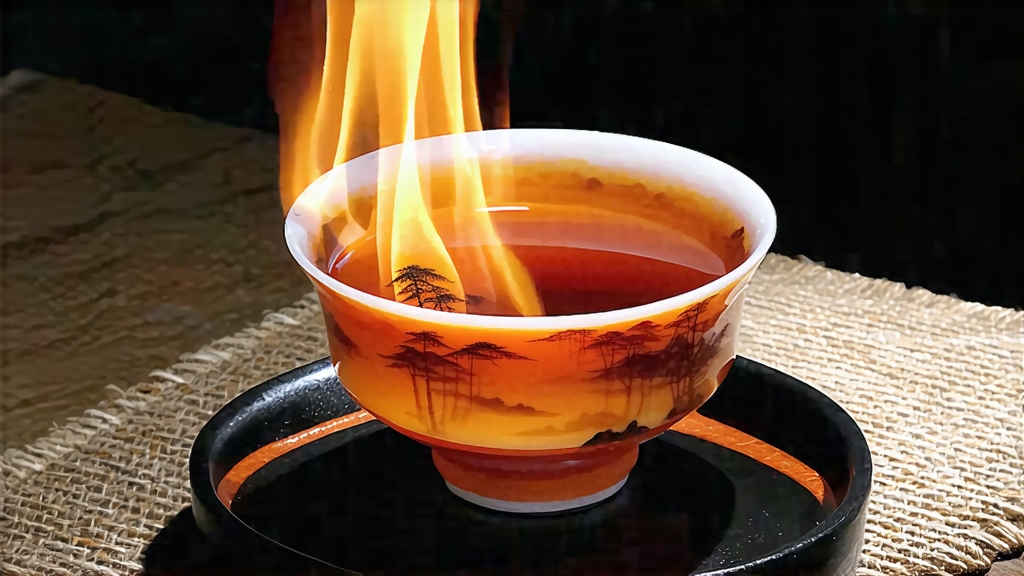
Long before English merchants coined the word “black tea,” the mountain villages of Tongmu in Fujian’s Wuyi range were finishing their spring leaves over smouldering pine embers. The tea they created—Lapsang Souchong—became the first fully oxidised leaf to leave China, sailing through Amsterdam and London in the early 1600s and forever changing the world’s palate. Today, while mass-market smoke-scented teas mimic its fragrance, the authentic, subtly sweet and resinous original is still coaxed from a handful of family plots hemmed by sheer cliffs and bamboo groves. Understanding Lapsang Souchong is therefore a journey into both the genealogy of black tea and the living culture of the Wuyi highlands.
History: From Mountain Refuge to Global Commodity
Legend places the birth of Lapsang Souchong during the late Ming dynasty, when passing armies forced farmers to speed-dry freshly picked leaves over open pine fires to meet tax deadlines. The accidental smoke infusion proved popular with the first Dutch traders who carried it to Europe, where Catherine of Braganza’s 1662 marriage to Charles II popularised tea drinking at the English court. By the eighteenth century, “Bohea Souchong”—a corruption of “Wuyi” and the grade “Souchong” (meaning the larger, fifth leaf)—was auctioned for prices higher than silver. The East India Company tried to transplant the plant and craft to Assam and Ceylon, but without Tongmu’s microclimate and resinous Chinese red pine, the copies lacked the original’s balance of cool mineral notes and lingering lychee sweetness.
Terroir: Why Tongmu Tastes Like No Other Place
Tongmu lies inside a national nature reserve at 27° N, where the Min River cuts a misty gorge between 1,200-metre granite peaks. Humidity hovers at 85 % year-round, diffusing sunlight into a soft, blue glow that slows photosynthesis and concentrates amino acids. The soil is a thin, acidic layer of weathered volcanic tuff rich in iron and potassium; roots must dive through fissures into mineral springs that impart a flinty aftertaste locals call “yan yun” or rock rhyme. Surrounding forests of Masson pine and cedar exude resin that drifts onto leaf surfaces, seeding the precursor molecules that later translate into sandalwood and longan fragrances during firing.
Cultivars: The Quiet Nobility of Cai Cha
Unlike many famous Chinese teas that rely on named clones such as Tieguanyin or Da Hong Pao mother trees, authentic Lapsang Souchong is made from seed-propagated Cai Cha (“vegetable tea”), a population of small-leaf Camellia sinensis var. sinensis that has adapted to Tongmu for over three centuries. Each bush is genetically distinct, forming a living archive that buffers the crop against disease and frost. Leaves are noticeably petite—barely 4 cm when mature—yet thick and leathery, storing sugars that survive the rigorous smoke schedule. Because seedling tea yields less than clonal plantations, annual production is measured in hundreds of kilos, not tonnes, explaining the premium attached to genuine Tongmu lots.
Craft: Where Fire Becomes Flavour
The processing calendar begins around the Qingming festival when one-bud-two-leaf shoots are plucked before 10 a.m., while dew still guards against breakage. After a brief withering on bamboo racks set beside mountain streams, the leaves are rolled by hand for 45 minutes to rupture cells and invite oxygen. Oxidation proceeds in cedar-lined trays tucked into the upper floor of three-hundred-year-old wooden houses; here, pine smoke from the ground-level hearth rises through slatted floors, mingling with natural enzymatic browning. The critical “zheng zao” (pine-drying) stage follows: baskets of oxidised leaf are lowered into a stone pit where embers of 40-year-old Masson pine roots smoulder at 80 °C. The tea is smoked not once but six to eight cycles, each lasting three minutes, with hour-long rests in between to allow moisture migration. Master smoke-readers judge readiness by the crackle of pine resin and the colour of ash—silver grey signals complete combustion, avoiding bitter creosote notes. Finally, a charcoal bake at 60 °C for two hours sets the moisture below 6 % and integrates the signature pine-litchi bouquet.
Grades: Souchong, Xiao Zhong,